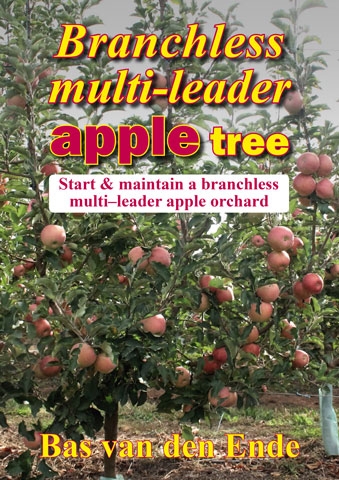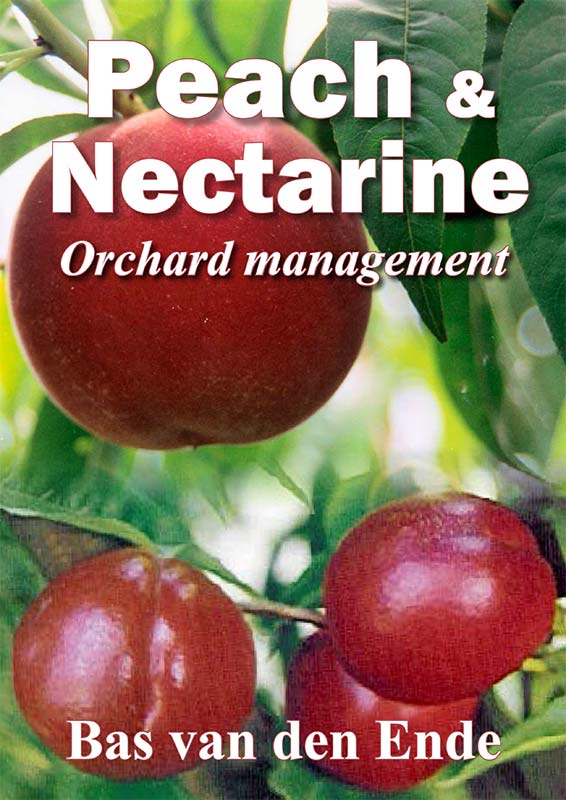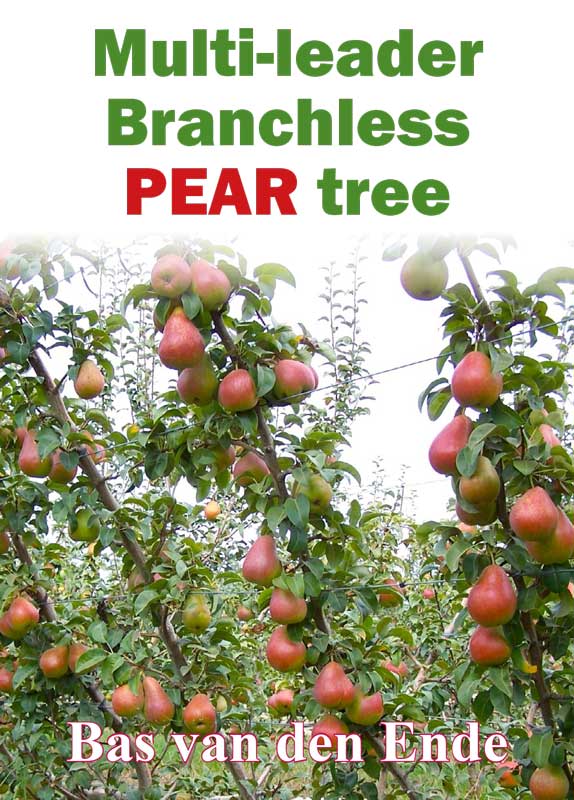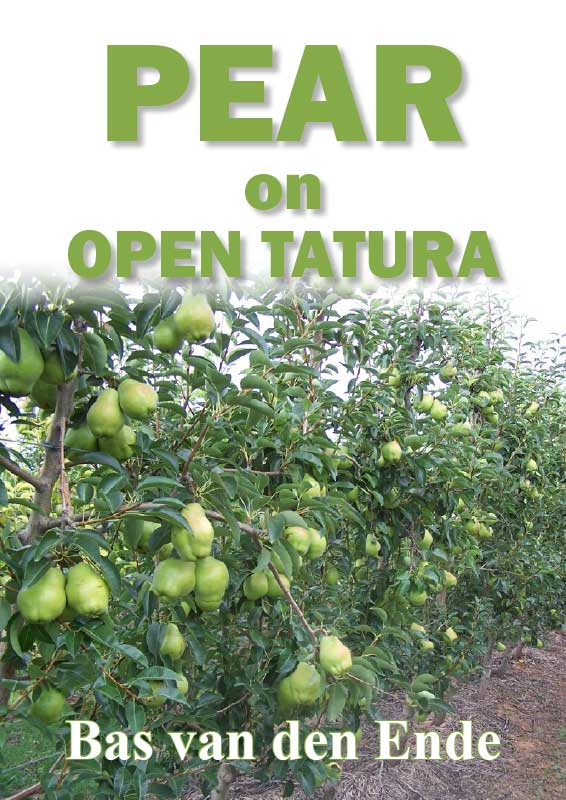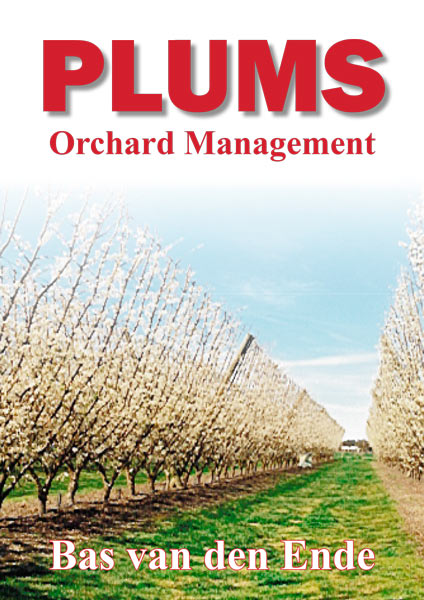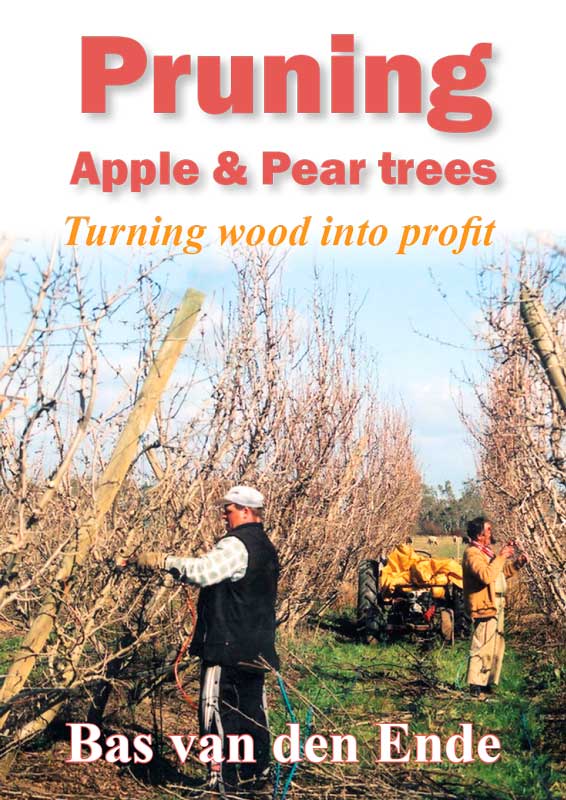The small closely-planted trees that are supported by a trellis have relatively little structural wood in relation to the bearing surface area because they do not need to develop a big complex tree structure.
Small & dense make a lot of sense (cont from last issue)
The small closely-planted trees that are supported by a trellis have relatively little structural wood in relation to the bearing surface area because they do not need to develop a big complex tree structure.
The branchless trees with two leaders each allocate much less dry matter to wood and proportionally more of their dry matter to fruit than trees with complex tree structures.
A study in the USA with large free-standing apple trees compared distribution of dry matter in the above-ground parts of the trees. It showed that 44 per cent ended up in structural wood, only 33 per cent in fruit, and 23 per cent in shoots.
Benefits of the Open-Tatura Ground-Level Production System:
• Cost savings for the orchardist through more efficient labour use.
• Lower picking, thinning and pruning costs.
• Reduction in occupational health and safety risk.
• Pickers and pruners will be more likely to want to work when the trees can be reached from the ground—an advantage when labour to work in orchards is hard to find.
• Trees can be pruned by a ‘simplified pruning recipe’ that can be easily explained to and followed by workers, thus reducing pruning costs.
• The system lends itself to partial mechanisation and mechanical assist as long as the equipment is compatible with the row width and the width of the canopies above the rows. The system is also adaptable to side wall hedgers or shearers that can be used for summer pruning.
• Trees catch less wind.
• Affordable tree densities of 2222 to 2964 trees per hectare.
Drawback of the Open-Tatura Ground-Level production System
• Frost is a greater danger to short trees whose flowers and fruit are closer to the ground than tall trees.
Orchard layout
In the manual, trees are planted at two very high densities. Each tree has two leaders trained on a trellis.
Trees alternate left and right in a double row, forming two V-shaped 2D-canopies in each row and leaning 22.5 degrees to vertical.
Each canopy is 2.20 m tall in summer (measured vertically).
Tree canopy and shape
With reduced tree height you do not need to compromise between yield efficiency and ease of working and spraying.
Marketable yields improve as tree height is reduced from 1.2 times to 1 time between row space.
As well as the importance of tree height relative to between row spacings, within-row light penetration into the lower canopy is important.
(cont next issue)
This article is from the Orchard Manual: GROUND-LEVEL ORCHARD PRODUCTION
See this article in Tree Fruit Sept 2023



